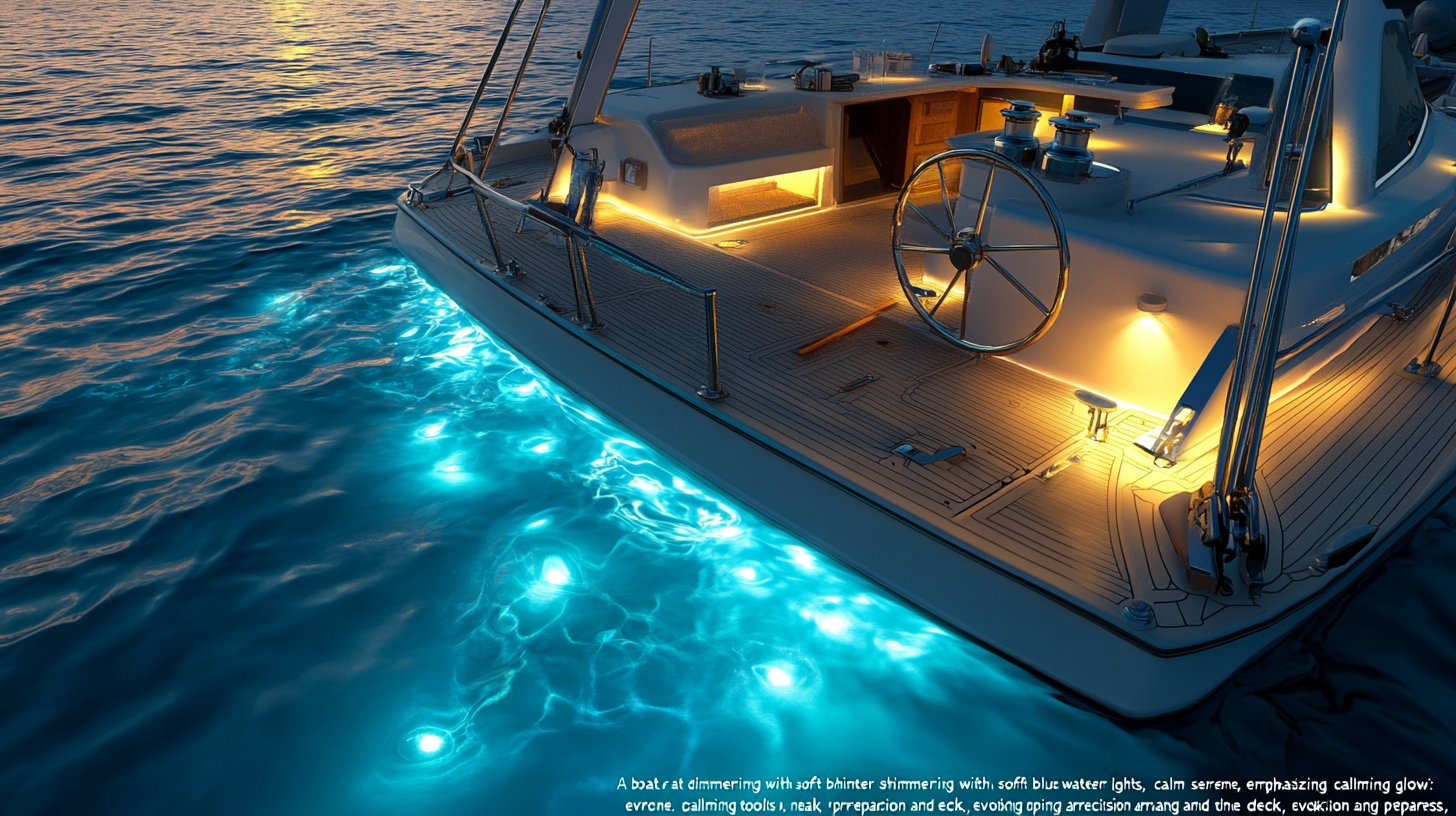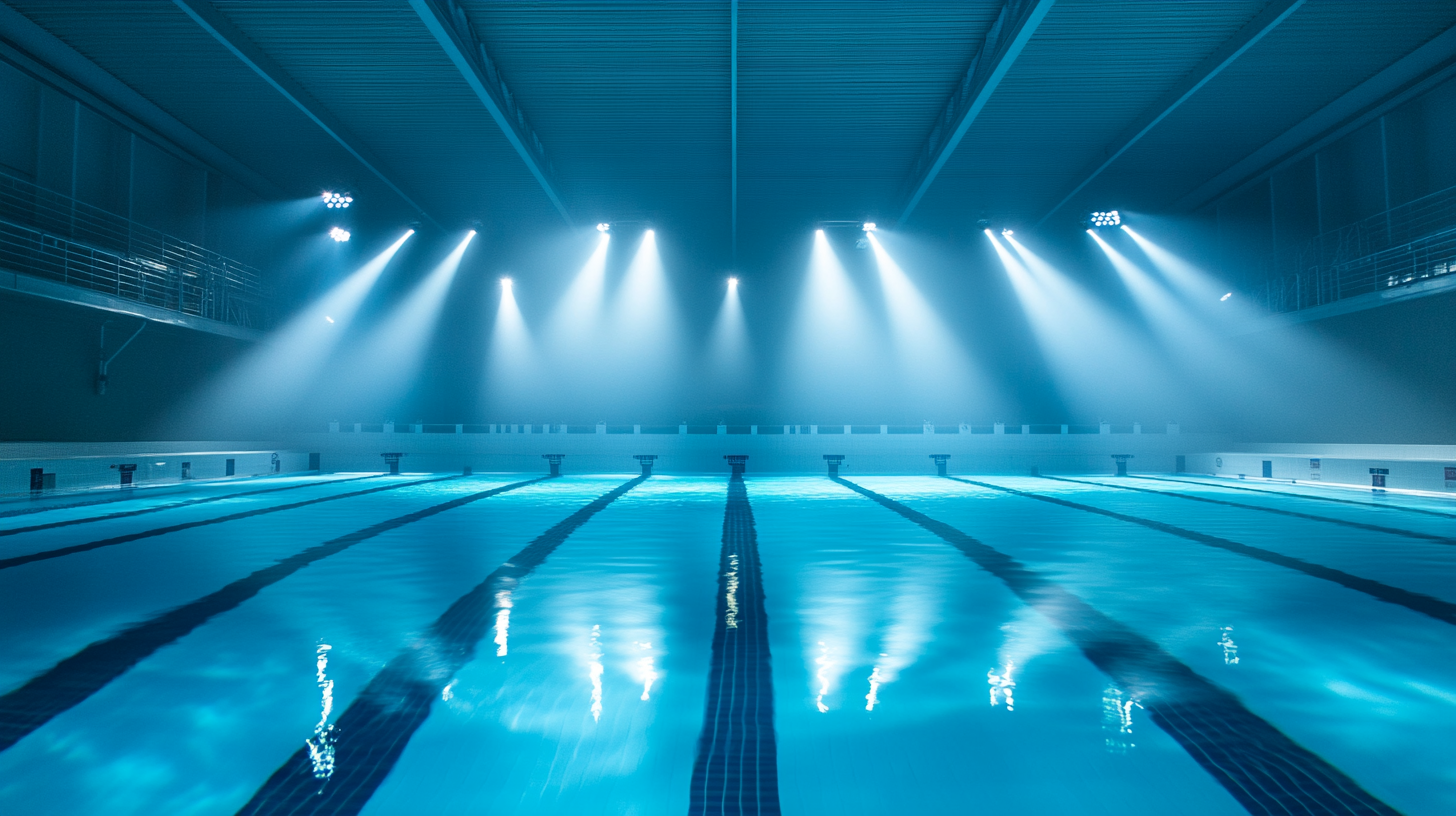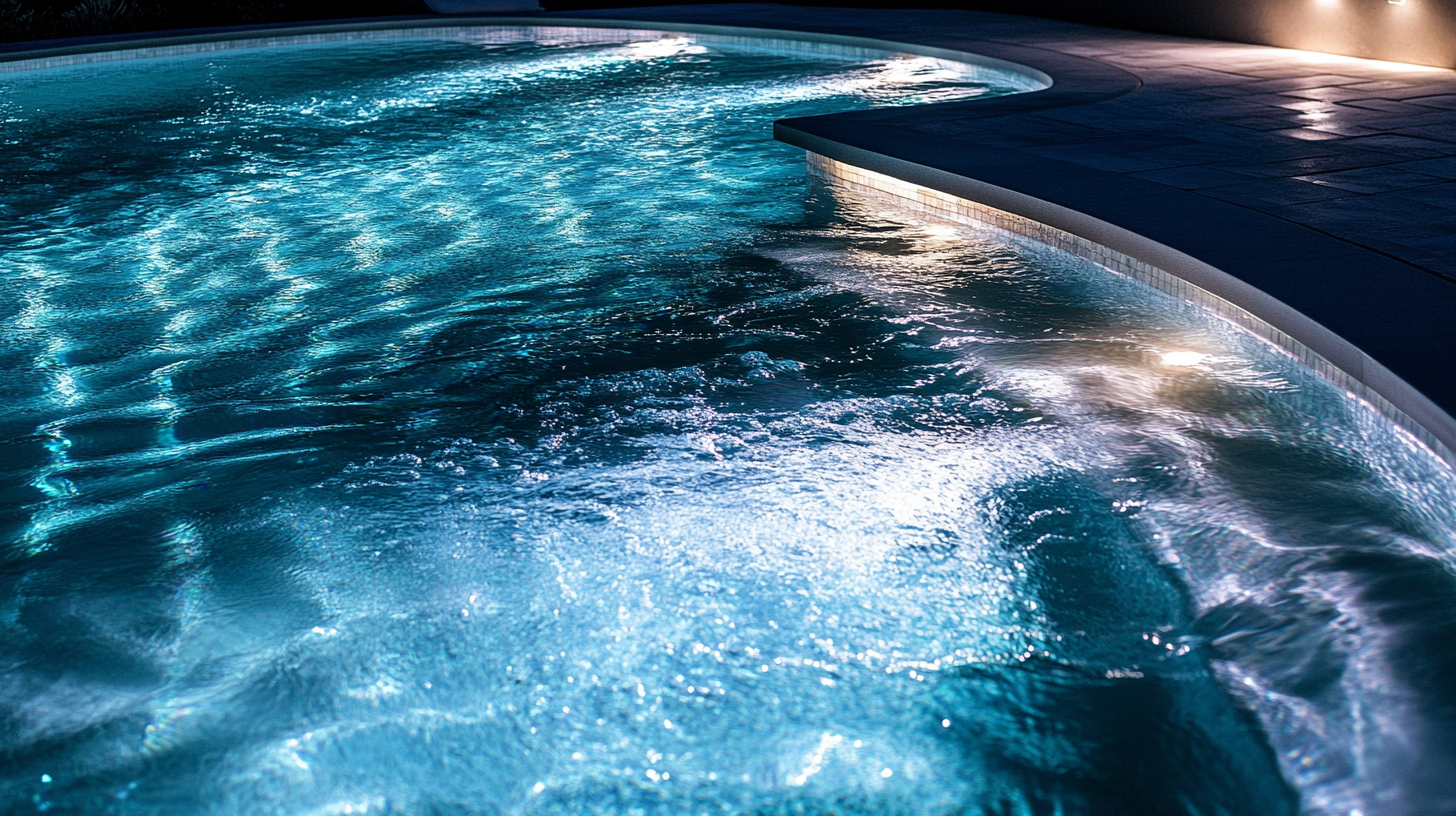Understanding the power requirements for underwater boat lights
Adding underwater boat lights can not only enhance the beauty of your vessel but also increase its safety and functionality, especially in low-light conditions. However, it’s important to start by assessing the power requirements for your light setup. Failing to do so can lead to inefficient operation, frequent battery drain, or even damage to your boat’s electrical system. What many boat owners don’t realize is that the power needs for underwater lights vary significantly depending on several factors such as the type of light, the number of units installed, and the total time of usage.
Understanding the power needs of your underwater lights ensures that you’re not overloading your circuits or under-utilizing the lighting. You’ll need to know how much energy each light will draw, and this requires more than just a quick glance at the product’s packaging. Dive into specifics like amperage, voltage requirements, and overall wattage. This will help ensure you’re installing a properly balanced system right from the start, which translates to more reliable lighting performance on every outing.
Moreover, gauging your lights’ power needs enables you to match them with your existing electrical configuration, further safeguarding against unwanted surprises out on the water. Proper planning will not only illuminate your adventure but also keep your boat operating smoothly night after night.
Key factors influencing power consumption
When it comes to understanding the power requirements for underwater lights, several key factors come into play that directly influence how much electricity your system will consume. First and foremost, the type of light you choose—whether it’s LED, halogen, or xenon—can make a substantial difference. LED lights, for example, are known for their efficiency, offering high brightness with significantly lower power consumption. Halogen and xenon lights, on the other hand, tend to draw more power for the same amount of light output. It’s not just about brightness either; the efficiency of the lights plays a huge role in determining how long you can safely run them without draining your boat’s battery.
The number of lights installed also has a major impact on your boat lighting’s overall power draw. While a single light might not put a noticeable strain on your electrical system, multiple lights add up fast. Think about it this way: each additional unit installed is another power-consuming component, contributing to the cumulative load. It’s essential to calculate the total wattage and amperage from all the lights combined to ensure you’re not pushing your electrical system to its limits. By doing this, you’ll avoid scenarios where overloading could end up causing power outages or even damage to your other onboard electronics.
Another often-overlooked factor is the voltage at which your underwater lights operate. Many boat lighting systems are designed for 12V or 24V DC setups, but this varies. If your boat’s electrical system is running on a different voltage than your lights are designed for, it could lead to inefficiency or even permanent damage. The power requirements also escalate the longer the lights are used, so prolonged usage can become an issue if you don’t plan for the inevitable consumption spike during night-time cruises. Make sure to pair the right voltage from your boat’s battery or power supply to the specific needs of your lights. Keeping these factors in check will significantly improve the longevity of your setup and improve your boating experience.
Don’t forget that different water conditions can influence how your underwater lights function. For instance, murky or high-sediment waters might cause you to use brighter lights or more units, consequently increasing your energy consumption. Clear water, by contrast, allows light to travel farther, so fewer or less powerful lights might be needed. Matching your lighting intensity to the conditions will not only save energy but will also ensure you’re getting the intended effect from your lights. By considering these key factors, you can better understand your lighting system’s power needs and confidently set up a system that is both efficient and effective.
Choosing the right power supply for your lighting system
When selecting a power supply for your underwater boat lights, you’re essentially choosing the lifeline for your entire lighting system. The power supply you pick will ensure that your setup delivers reliable performance, while also protecting you from unexpected failures or electrical issues. Whether you have a smaller vessel with a relatively simple light setup or a larger craft with an extensive array of underwater lights, your lighting system’s power requirements will dictate the most suitable choice.
First, it’s essential to start by understanding the total wattage of your lights. For instance, if you have multiple LED lights, you’ll need to add up their individual power consumption to get a clear picture of the total demand on your power supply. This is especially important because, while LED lights are typically more energy-efficient, they may still require a specific power capacity if you have many of them. Once you know the cumulative wattage, you’ll want to ensure that the power supply can deliver enough current without being overstressed, as that could lead to overheating or system failure. A good rule of thumb is to select a power supply that exceeds your system’s total wattage by at least 20-30%, giving you some headroom for any future upgrades or potential voltage spikes.
When we talk about “marine-grade” power supplies, these are specifically designed to withstand the harsh and often unpredictable marine environment. Saltwater exposure, constant vibrations, and fluctuating temperatures can all take a toll on electrical components, so it’s critical to choose a power supply that’s been ruggedized for these conditions. Opt for units with waterproof ratings, corrosion-resistant materials, and solid enclosures that offer protection against both moisture and mundane wear-and-tear. This not only ensures longevity but also reduces the chance of short circuits or other electrical hazards while you’re out on the water.
Another key consideration is whether the power supply matches the voltage needs of your underwater lights. As previously mentioned, many boat lighting systems are designed for either 12V or 24V DC setups. Installing the wrong power supply — say, a 12V system when your lights require 24V — can result in dim, underperforming lights or worse, permanent damage to your lights and the power system. Some skippers opt for power supplies that have adjustable voltage outputs, allowing you to fine-tune the voltage to meet your boat lights’ specific requirements, maintaining both safety and performance.
If your lighting design includes several lights spread across different areas of your boat, keep in mind that the power supply will need to correctly distribute energy to each unit. In such scenarios, it’s worth evaluating distributed power supplies that can manage multiple connections better. These are especially helpful in large boats where you may want to power different sections (like the stern and bow) separately, making it both a practical and efficient power distribution solution.
Finally, think about battery compatibility. If your boat runs solely on batteries, you’ll need a power supply that works harmoniously with your boat’s battery system to efficiently convert stored power for light use. The last thing you want is to end up in a situation where running your underwater lights drains your entire battery bank, leaving you temporarily stranded without any power. That’s why it’s a smart move to include a battery management system that can monitor power consumption in real time, alerting you before things dip too low. Some advanced systems even include intelligent power management features, which reduce the brightness of the lights as the battery depletes, giving you longer run times without completely draining your resources.
By choosing the right power supply for your lighting system, you’ll not only meet the specific power requirements but also ensure optimal performance with minimal risk of failure. With the right setup, your boat lighting can run efficiently, even on long night-time cruises, making your time on the water both safer and more enjoyable.
Energy-efficient solutions for marine lighting
One of the most effective approaches to reduce the power consumption of underwater lights is by embracing energy-efficient technologies designed specifically for marine environments. Among these, LED lights stand out as a powerful option due to their low energy requirements and long lifespan. While traditional halogen and incandescent lights may supply adequate brightness, they demand significantly more power and produce more heat, which can negatively impact your boat’s battery and overall electrical system.
In contrast, LED underwater lights offer an impressive lumen-per-watt ratio. For instance, a 10W LED light can produce the same brightness as a 50W halogen light, cutting energy consumption by approximately 80% while maintaining similar light output. This makes LED lights an ideal choice for boat owners looking to operate lights efficiently over extended periods.
Comparing LED and Halogen Lights:
| LED Light | Halogen Light | |
|---|---|---|
| Power Consumption | Lower (10W – 30W) | Higher (50W – 150W) |
| Heat Output | Minimal | Higher |
| Lifespan | Up to 50,000 hours | 1,000 to 5,000 hours |
| Lumen Output | High lumens per watt | Low lumens per watt |
In addition to LED lights, advances in smart lighting control systems have made energy efficiency more attainable. By integrating a dimming function, you can adjust the brightness and thus the power consumption of your underwater lights depending on your needs. For example, if you’re at anchor and simply want ambient lighting, dimming the lights can cut unnecessary energy consumption, extending the usability of your battery.
Motion sensors are another energy-saving option that can be highly efficient for underwater lights. Instead of running your lights for several hours continuously, lights equipped with motion sensors only activate when movement is detected near the surface of the water or under the boat. This not only saves energy but also extends the longevity of your lighting system by reducing the overall burn time.
Another practical method to optimize power use is to assess color temperature and beam angles. Higher kelvin lights, which emit a bluish or cool white tone, are often more visible underwater and naturally create a brighter effect with fewer light units. Moreover, choosing lights with a narrower beam angle will concentrate light output in a specific direction rather than spreading it inefficiently across a wide area, thus reducing the need for more powerful or numerous lights.
It’s also worth considering solar-powered underwater lights for smaller boats or specialized lighting needs. While solar lights may not generate the same output as an electrically powered system, they provide an eco-friendly and energy-efficient alternative, tapping into renewable energy throughout the day for use at night.
Finally, a proper installation can improve your lighting system’s efficiency. Ensure that the wiring is run correctly, using high-quality marine-grade cables with proper gauge selection to reduce power loss from conductivity issues. Routinely inspect your power connections to make sure that corrosion or loose contacts aren’t causing wasted energy. Even minor inefficiencies in the system’s infrastructure can snowball into significantly greater power demands over time.
By analyzing and adopting these energy-efficient solutions, boat owners can significantly reduce the power requirements for their underwater boat lights, ensuring longer time on the water without excessive battery drainage or additional fuel costs for powering generators.
Troubleshooting common power issues with underwater lights
Even the best underwater boat lighting setups can occasionally run into issues, especially when it comes to power. Power-related problems are among the most common complaints from boaters when dealing with underwater lights, and they can lead to anything from dim illumination to complete system failure. Being able to troubleshoot these issues quickly can save you both time and frustration, and in many cases, it’s not as complicated as you might think.
One of the first clues that something might be wrong with your boat’s lighting system is flickering or inconsistent light performance. This often points to a connection issue, likely caused by corrosion or loose wires. Remember, saltwater can be hard on electrical systems. Inspect all the electrical connections, including any splices and terminals, for signs of salt buildup, rust, or fraying. A simple cleaning of the contacts and applying anti-corrosion spray can often resolve the problem, bringing your lights back to full strength.
If your lights aren’t turning on at all, one of the first things you’ll want to check is the boat battery. Underwater lights draw power directly from the boat’s electrical system, and if your battery’s charge is low, the lights may not have enough energy to function. Before diving into more complicated fixes, ensure the battery is fully charged, and note that multiple systems running simultaneously—navigation systems, pumps, etc.—could also sap the available power. Investing in a voltmeter can help you monitor your battery’s current output, giving you insight into whether there’s enough juice to power the lights properly.
Another frequent issue boat owners experience is overheating. If your lights feel hot to the touch, it’s a red flag. Be aware that some lower-quality or non-marine rated lights may not dissipate heat as efficiently as they should. Overheating is often a sign of electrical overload, which could stem from a mismatch in power requirements. For example, if you’ve installed 24V lights in a 12V system, the lights will attempt to draw more power than they can safely handle, resulting in excessive heat. Turning the lights off immediately and allowing them to cool down is crucial to avoid potential damage or even a fire hazard. Once they’ve cooled, revisit your system specs to ensure that your lights are compatible with the boat’s available voltage. If not, you may need a voltage converter or a different power supply altogether.
Occasionally, boaters also encounter issues where their underwater lights emit dim or uneven light. Dim lighting is often an indicator of a voltage drop, which can occur if the wiring is too long or if wires with an inadequate gauge (thickness) have been used. For underwater lighting, marine-grade wiring with the correct gauge is vital to ensure that power flows efficiently from your battery to the lights themselves. A quick fix might be swapping out small-gauge wires for thicker ones to handle the electrical load better. Checking the condition of the wires along their entire length—especially in areas that see constant moisture or friction—is also a good idea, as damaged wires and faulty insulation can lead to power loss.
Another sneaky culprit behind unexplained power problems is improper grounding. If your underwater lights are not properly grounded, they might behave erratically, turning off unexpectedly or flickering. Confirm that the grounding wire has a secure, uninterrupted connection to the boat’s electrical grounding system. Poor grounding can not only interfere with the performance of your lights but also create safety hazards by exposing other onboard electronics to the risk of shorts or malfunctions.
Lastly, your boat’s power source could be struggling to meet the demands of multiple systems during long outings, leading to sporadic power drops that affect the underwater lights. If you suspect this, performing a full audit of your vessel’s electrical load is a smart step. Use your boat’s amp rating to determine the total power consumption of all onboard systems, and make sure it aligns with the capacity of your battery or alternator. If you find that your electrical system is running near its total capacity, an upgrade to your power source—or the addition of an auxiliary battery—might be necessary.
Troubleshooting your underwater boat lighting doesn’t have to be a guessing game. By understanding the likely causes of common power issues—whether it’s faulty wiring, voltage mismatches, or a depleted battery—you can navigate these challenges like a pro and keep your lights shining bright, ensuring both aesthetics and safety on your night-time voyages.


